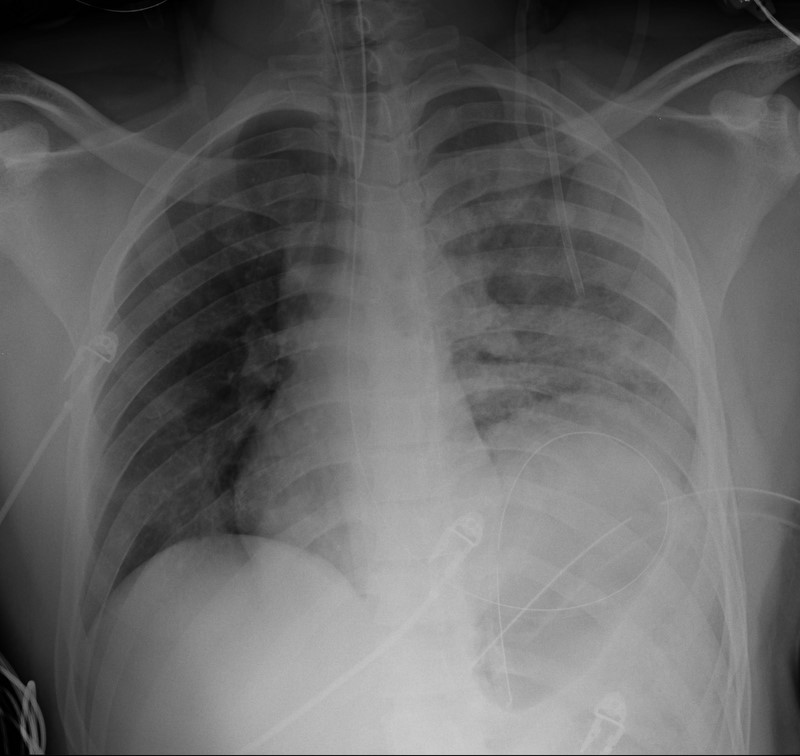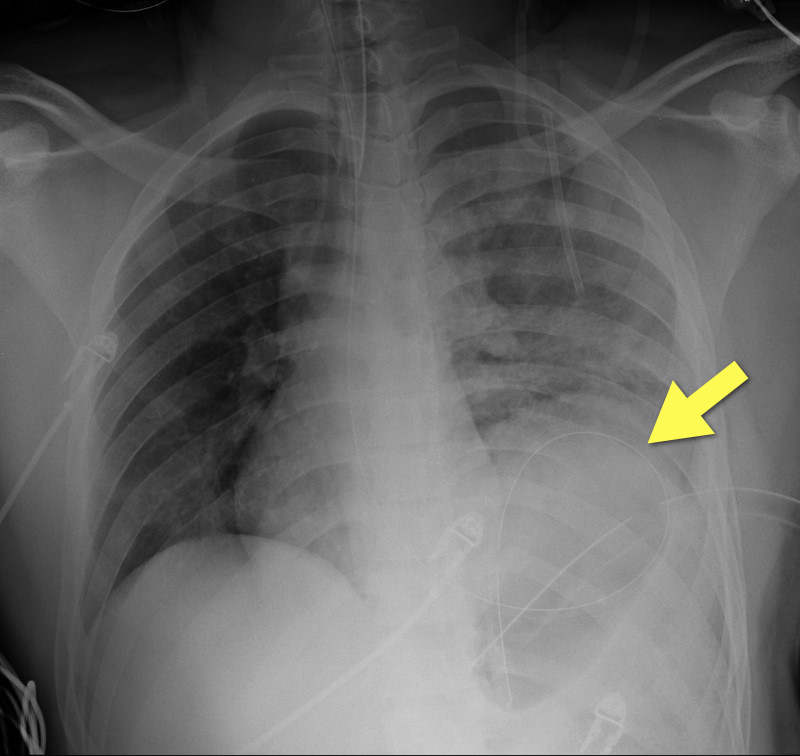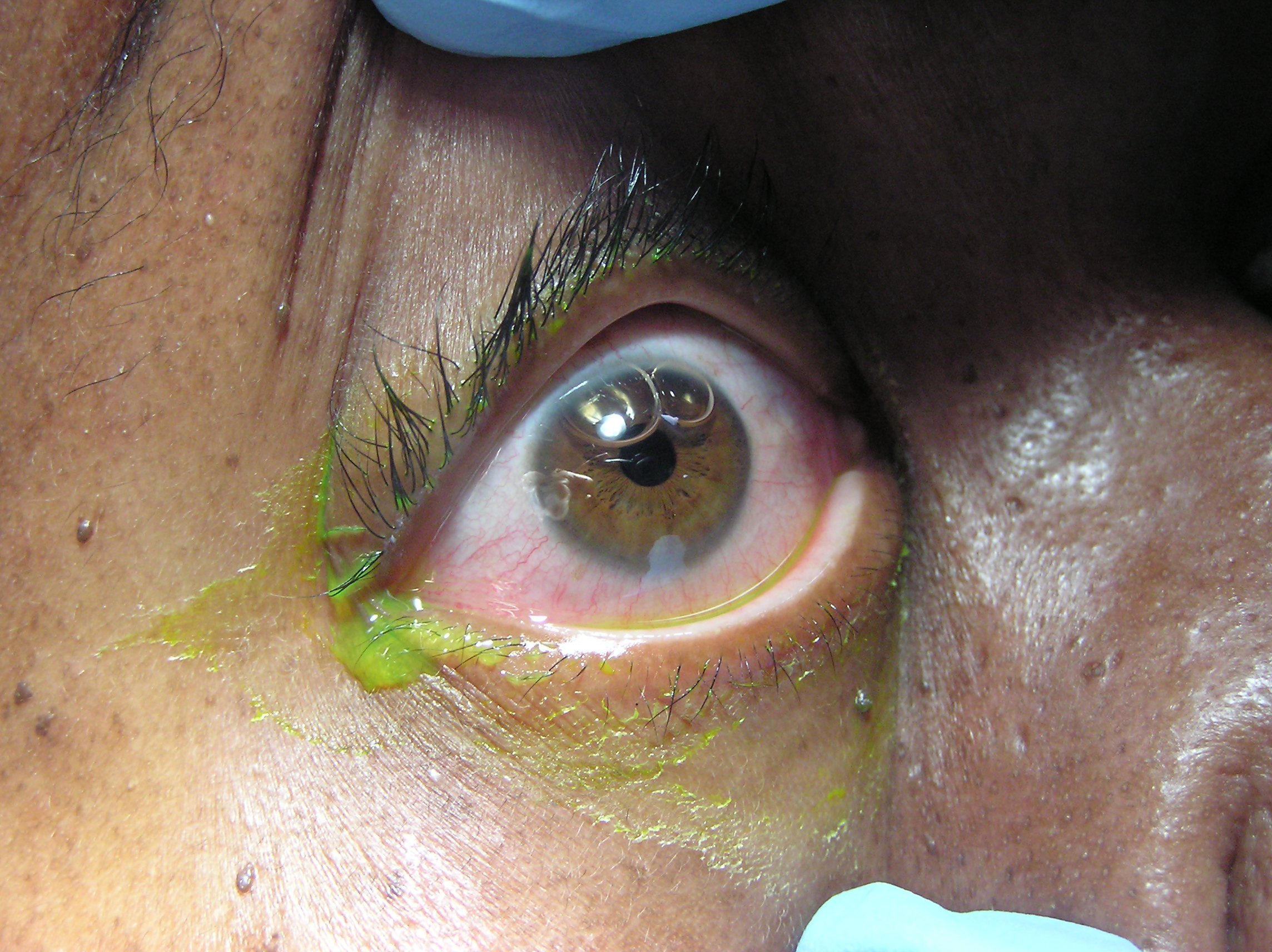Category: Pediatrics
Keywords: Concussion, sports injury, TBI, return to play (PubMed Search)
Posted: 9/30/2011 by Mimi Lu, MD
Click here to contact Mimi Lu, MD
You are seeing a high school football player following a head injury. After your exam or head CT, you determine the child to have had a mild traumatic brain injury (aka concussion). You are ready to discharge him home when the parents or coach ask you when he can return to playing football.
A concussion is a form of functional, rather than structural, brain injury that displays no evidence of injury on structural neuroimaging. Symptoms include transient loss of consciousness, amnesia, vomiting, headache, poor school work, sleep changes, and emotional lability. Remember that children’s brains (even adolescents) are still developing, and are more prone to prolonged recovery following injury.
Recovery of symptoms usually follows a sequential course. Current guidelines recommend a stepwise return to play (aka concussion rehabilitation) involving both physical and cognitive rest (e.g. no texting, video games, limited school work). Once asymptomatic, the patient goes through each stage with at least 24 hours between stages. If symptoms return during a stage, then the patient is expected to return to the previous stage for 24 hours before attempting the higher stage again.
Return to Play Guidelines:
| Rehabilitation stage | Functional Exercise |
| Complete physical and cognitive rest |
| Walking, swimming, stationary cycling at 70% maximal heart rate, no resistance exercise |
| Specific sport related drills but no head impact |
| More complex drills, may start light resistance training |
| After medical clearance, participate in normal training |
| Normal game play |
References:
Category: Toxicology
Keywords: toxicology, pharmacist (PubMed Search)
Posted: 9/29/2011 by Fermin Barrueto
(Updated: 12/14/2025)
Click here to contact Fermin Barrueto
A growing trend in EDs is to have a dedicated ED Pharmacist present to assist with the evaluation of a patient's medication list, appropriate and safe drug administration and to improve drug delivery times. To date, it has been difficult for hospitals to determine if this was a cost-effective measure. There has been increasing research that has shown the proven benefits that physicians feel when they have an ED Pharmacist. With the aging population, increasing polypharmacy, core measure and national patient safety goals all rising to the top of hospital initiatives, the ED pharmacist will be proven to be a valuable cog of the ED - as UofMd already knows
1) Improved safety - this study showed an ED pharmacist caught 2.9 errors/100 medications, very important considering the cost of just one severe reaction can cause a hospitalization or even litigation(1)
2) Improved time to delivery of medication - this study showed improved time of delivery of medications not found in a Pyxis from 61 min with no pharmacist decreased to 47 min with ED pharmacist.(2)
Further studies will be needed to determine the true cost:benefit however with core measures like 6hr time to administration of antibiotics and the safe/timely adminstration of tPA combined with patient safety/quality goals - the value of an ED pharmacist will only be accentuated.
1 - Rothschild JM, Churchill W, Erickson A, et al. Medication errors recovered by emerency department pharmacists. Ann Emerg Med. 2010 Jun;55(6):513-21. Epub 2009 Dec 11.
2 - Owen KP. The role of the emergency department pharmacist in the timing of medication delivery. Clin Tox 2011. 49(6): 591.
Category: Neurology
Keywords: marcus gunn pupil, afferent pupillary defect, swinging flashlight test (PubMed Search)
Posted: 9/28/2011 by Aisha Liferidge, MD
Click here to contact Aisha Liferidge, MD
Category: Critical Care
Keywords: Epinephrine, adrenaline, cardiac arrest, return of spontaneous circulation, ROSC, critical care, ICU, saline (PubMed Search)
Posted: 9/27/2011 by Haney Mallemat, MD
Click here to contact Haney Mallemat, MD
· The use of epinephrine in cardiac arrest is currently standard of care.
· Several observational and non-randomized trials have demonstrated the efficacy of epinephrine in cardiac arrest, but there has never been a randomized double-blind placebo-controlled trial in humans.
· A recently published Australian trial randomized cardiac patients (of any type) to receive either 1 mg of epinephrine (n=272) or 0.9% normal saline (n=262); the primary end-point was survival to hospital discharge. Secondary end-points were pre-hospital return of spontaneous circulation (ROSC) and neurological outcomes at hospital discharge.
· Significantly more patients had pre-hospital ROSC in the epinephrine group (regardless of the underlying rhythm), however, there was no statistically significant difference in survival to discharge (the primary outcome) between groups.
· This randomized double-blinded placebo-controlled trial raises many new and interesting questions about epinephrine, but more study is needed before changing current practice.
Jacobs IG, et al. Effect of adrenaline on survival in out-of-hospital cardiac arrest: A randomized double-blind placebo-controlled trial. Resuscitation 2011;82:1138-1143.
Follow me on Twitter (@criticalcarenow) or Google+ (+haney mallemat)
Category: Geriatrics
Keywords: fever, infections, elderly, geriatric (PubMed Search)
Posted: 9/25/2011 by Amal Mattu, MD
(Updated: 12/14/2025)
Click here to contact Amal Mattu, MD
Elderly patients in general have a lower baseline body temperature than younger patients. Consequently, it makes sense to redefine the definition of what constitutes a "fever" in the elderly. Rather than using the typical oral temperature cutoff of 38o C (100.4o F) for defining a fever, instead consider using 37.2o C (99o F). Redefining fever in this way increases the sensitivity for detecting bacterial infections from 40% to 83% while retaining an 89% specificity.
Caterino JM. Evaluation and management of geriatric infections in the emergency department. Emerg Med Clin N Am 2008;26:319-343.
Category: Orthopedics
Keywords: radial nerve, mononeuropathy (PubMed Search)
Posted: 9/24/2011 by Brian Corwell, MD
(Updated: 12/14/2025)
Click here to contact Brian Corwell, MD
Saturday night palsy - radial nerve mononeuropathy due to improper arm positioning associated with inebriated sleep.
Physical examination - Wrist and finger drop.
Patients may have findings suggestive of ulnar nerve co-involvement (interossei testing) which may falsely lead the examiner to consider a more proximal location for the lesion such as the brachial plexus.
The finger drop caused by the radial nerve lesion places the hand at a mechanical disadvantage. Adjust for this by examining the hand on a flat surface (stretcher, counter top). With the fingers now supported in extension at the MCP joint (no longer "dropped"), the interossei can now be tested in isolation and will be normal.
Category: Pediatrics
Keywords: ultrasound, intra-abdominal injury, free fluid, blunt trauma (PubMed Search)
Posted: 9/23/2011 by Mimi Lu, MD
Click here to contact Mimi Lu, MD
Category: Neurology
Keywords: glascow coma scale, GCS (PubMed Search)
Posted: 9/21/2011 by Aisha Liferidge, MD
(Updated: 12/14/2025)
Click here to contact Aisha Liferidge, MD
EYE OPENING
4 = spontaneous
3 = to voice
2 = to pain
1 = none
VERBAL RESPONSE
5 = orientated
4 = confused
3 = inappropriate
2 = incomprehensible
1 = none
MOTOR RESPONSE
6 = obeys command
5 = localizes pain
4 = withdraw to pain
3 = decorticate
2 = decerebrate
1 = none
Category: Critical Care
Posted: 9/20/2011 by Mike Winters, MBA, MD
Click here to contact Mike Winters, MBA, MD
Spontaneous Bacterial Peritonitis
Al-Khafaji A, Huang DT. Critical care management of patients with end-stage liver disease. Crit Care Med 2011; 39:1157-66.
Category: Visual Diagnosis
Posted: 9/19/2011 by Haney Mallemat, MD
(Updated: 8/28/2014)
Click here to contact Haney Mallemat, MD
19 year-old male s/p high-speed MVC with hypotension and diminished breath sounds on left. Diagnosis?

Answer: Diaphragmatic rupture (Note position of NG tube on image below).
·Uncommon; less than 1% of all traumatic injuries
·Diagnosis may be obvious on CXR (as in example) or subtle (e.g., diaphragmatic elevation, basilar atelectasis, etc.)
·Requires a high-index of suspicion because delayed diagnosis increases the risk of abdominal organ herniation or strangulation.
·Mortality depends on the mechanism and presence of associated injuries; mortality is highest for blunt injuries.

Bhavnagri S, et al. When and how to image a suspected broken rib. Cleveland Clinic J Med. 2009;76(5):309.
Williams M, et al. Predictors of mortality in patients with traumatic diaphragmatic rupture and associated thoracic and/or abdominal injuries. Am Surg. 2004;70(2):157.
National Trauma Data Base. American College of Surgeons 2000-2004.
Follow me on Twitter (@criticalcarenow) or Google+ (+haney mallemat)
Category: Cardiology
Keywords: acute MI, MI, myocardial infarction, acute coronary syndrome (PubMed Search)
Posted: 9/18/2011 by Amal Mattu, MD
(Updated: 12/14/2025)
Click here to contact Amal Mattu, MD
A patient presents to the ED in pulmonary edema, hypotensive, and has JVD. There's a new systolic murmur. The patient had an acute MI 7-10 days ago and had appropriate treatment and uncomplicated course, then discharge. What's the diagnosis and what do you do?
Step 1: Sign out immediately.
Step 2: If it's not time to sign out (just kidding about step 1), listen carefully to the murmur. If it's heard best at the lower sternal border, it's probably a ruptured papillary muscle with acute MR. If it's a "machinery" type murmur heard throughout the precordium loudly, it's probably an acute VSD.
Step 3: VSD patient is likely to die, but with either one, you've got to move quickly. IMMEDIATELY call cardiology AND cardiac surgery. The patient is in need of a balloon pump and OR.
All you can do is buy time until the patient goes upstairs....pressors for BP, IV NTG as tolerated for preload reduction, and be judicious with diuretics. Vasodilators might help unload the heart also. This patient may end up on 2-3 drips, and make sure ALL meds are titrateable. And just keep your fingers crossed!
Category: Orthopedics
Keywords: Posterolateral Corner, knee (PubMed Search)
Posted: 9/17/2011 by Michael Bond, MD
(Updated: 12/14/2025)
Click here to contact Michael Bond, MD
Posterolateral Corner Injuries
The posterolateral corner “PLC” of the knee is becoming increasingly recognized as an extremely important structure to maintain the stability of the knee joint.
PLC injuries occur with hyperextension, varus load and tibial external rotation. So the most common mechanism is a posterolaterally directed blow to the anteromedial tibia when the knee is hyperextended. PLC injuries are commonly associated with injury to other ligaments (ACL, PCL, LCL) and occur in isolation in <5% of cases. If suspected make sure to check for other ligamentous injuries.
Since this injury can be missed and is associated with significant disability it is important to test for it. This YouTube video, http://youtu.be/bnXaTdvZZ6o, demonstrates several examination techniques that can identify the injury.
Wheeless Online Ortho Reference http://www.wheelessonline.com/ortho/posterolateral_rotary_instability_of_the_knee
Category: Neurology
Keywords: bell palsy, bell's palsy, cranial nerve seven palsy, facial paralysis (PubMed Search)
Posted: 9/14/2011 by Aisha Liferidge, MD
(Updated: 12/14/2025)
Click here to contact Aisha Liferidge, MD
Category: Critical Care
Keywords: Procedures, Arterial lines, Axillary, hemodynamic monitoring (PubMed Search)
Posted: 9/13/2011 by Haney Mallemat, MD
Click here to contact Haney Mallemat, MD
Radial and femoral arteries are common sites for arterial-line placement, but are not without complications (e.g., Radial artery: malfunction with positioning and Femoral artery: contamination and infection); an alternative site to consider is the axillary artery.
The axillary artery's superficial location and large size make it a desirable choice for cannulation.
The "anatomical-landmark" and "palpation" methods have been the traditional techniques of axillary arterial cannulation, however these methods may be difficult for to a variety of reasons (e.g., obesity, anasarca, arterial disease, etc.)
Ultrasound allows visualization of the axillary artery and avoids unintended injury to structures in close proximity (e.g., brachial plexus, pleura, axillary vein, etc.); please see figures 1 and 2 in the referenced Sandhu article and http://www.youtube.com/watch?v=Z31YiyV7cNQ.
A recent study (Killu, 2011) found that ultrasound increases success rates when compared to the traditional landmark approach.
Killu, K. et al. Utility of Ultrasound Versus Landmark-Guided Axillary Artery Cannulation for Hemodynamic Monitoring in the Intensive Care Unit. ICU Director; 2011. 2(3), 54–59.
Sandhu, N. The Use of Ultrasound for Axillary Artery Catheterization Through Pectoral Muscles: A New Anterior Approach. Anesthesia and analgesia. 2004; 562–565.
Follow me on Twitter (@criticalcarenow) or Google+ (+haney mallemat)
Category: Visual Diagnosis
Posted: 9/12/2011 by Rob Rogers, MD
(Updated: 12/14/2025)
Click here to contact Rob Rogers, MD
A 50 year-old patient presents after a self-inflicted eye injury. The patient had taken some type of needle and inserted it into their eye.
What is the diagnosis and what complications might result?

The image shows air bubbles in the anterior chamber. Since air has been introduced into the eye, the patient is at risk for elevated intraocular pressures. In addition, you would need to consider endophthalmitis as a complication.
Category: Cardiology
Keywords: troponin, supraventricular tachycardia, svt, dysrhythmia, tachydysrhythmia, tachycardia (PubMed Search)
Posted: 9/11/2011 by Amal Mattu, MD
Click here to contact Amal Mattu, MD
SVT is rarely, if ever, the presenting rhythm associated with an acute MI. As a result, physicians should not feel compelled to send troponin levels and perform rule-outs purely based on an SVT presentation. Instead, the decision to rule out a patient presenting with SVT should be based on whether there is a constellation of other concerning symptoms, exclusive of the SVT (e.g. if the patient presented with chest pressure radiating down the arm and diaphoresis, in addition to the SVT).
Two recent studies confirmed that routine troponin testing in patients with SVT is extremely low-yield, and instead often produces false-positive troponin results that lead to unnecessary admissions and workups. In other words, mild troponin elevations may occur in SVT but they do not correlate with true ACS.
Bukkapatnam RN, Robinson M, Turnipseed S, et al. Relationship of myocardial ischemia and injury to coronary artery disease in patients with supraventricular tachycardia. Am J Cardiol 2010;106:374-377.
Carlbert DJ, Tsuchitani S, Barlotta KS, et al. Serum troponin testing in patients with paroxysmal supraventricular tachycardia: outcome after ED care. Am J Emerg Med 2011;29:545-548.
Category: Orthopedics
Keywords: knee dislocation, ABI, vascular (PubMed Search)
Posted: 9/10/2011 by Brian Corwell, MD
Click here to contact Brian Corwell, MD
Evaluation of circulatory status is the most important aspect of post reduction care.
Look for hard findings such as cool/cold lower extremity, diminished or absent pulses, pale or dusky skin, paralysis, etc.
However, the absence of these findings should not lull the clinician into a false sense of security. The degree of initial joint deformity, presence of full bounding pulses and warm skin over the dorsum of the foot can all be present in the setting of vascular injury.
The next step will be to perform an ABI (ankle-brachial index).
In one small study, no patient with an ABI greater than or equal to 0.9 had a vascular injury.
Patients with a reassuring physical exam and ABIs should be admitted for vascular checks without further imaging.
Patients with a reassuring physical examination but with an abnormal ABI should have an imaging study obtained (arteriogram/CT angiogram).
Patients with hard findings of a vascular injury should have an emergent vascular surgery consultation.
The value of the ankle-brachial index for diagnosing arterial injury after knee dislocation: a prospective study.
Category: Pediatrics
Posted: 9/9/2011 by Rose Chasm, MD
(Updated: 12/14/2025)
Click here to contact Rose Chasm, MD
MedStudy Pedatrics Board Review, Core Curriculum, Book 3 2004
Category: Toxicology
Keywords: adenosine, central line (PubMed Search)
Posted: 8/29/2011 by Bryan Hayes, PharmD
(Updated: 9/8/2011)
Click here to contact Bryan Hayes, PharmD
Every so often a patient arrives in PSVT with their only intravenous access being through a hemodialysis port.
Initial dose of adenosine should be reduced to 3 mg if administered through a central line. Remember a central line delivers the adenosine right where you need it. This recommendation is supported by the 2010 ACLS guidelines. Second and third doses should be 6 mg (instead of 12 mg).
Cases of prolonged bradycardia and severe side effects have been reported after full-dose adenosine through a central line. Other situations to consider lower doses include patients currently receiving carbamazepine or dipyridamole or in those with a transplanted heart.
McIntosh-Yellin NL, et al. Safety and efficacy of central intravenous bolus administration of adenosine for termination of supraventricular tachycardia. J Am Coll Cardiol 1993;22:741–5.
Chang M, et al. Adenosine dose should be less when administered through a central line. J Emerg Med 2002;22(2):195-8.
Neumar RW, et al. Part 8: Adult Advanced Cardiovascular Life Support: 2010 American Heart Association Guidelines for Cardiopulmonary Resuscitation and Emergency Cardiovascular Care. Circulation 2010;122:S729-S767.
Category: Neurology
Keywords: encephalitis, meningitis, acyclovir, headache, fever (PubMed Search)
Posted: 9/7/2011 by Aisha Liferidge, MD
Click here to contact Aisha Liferidge, MD
